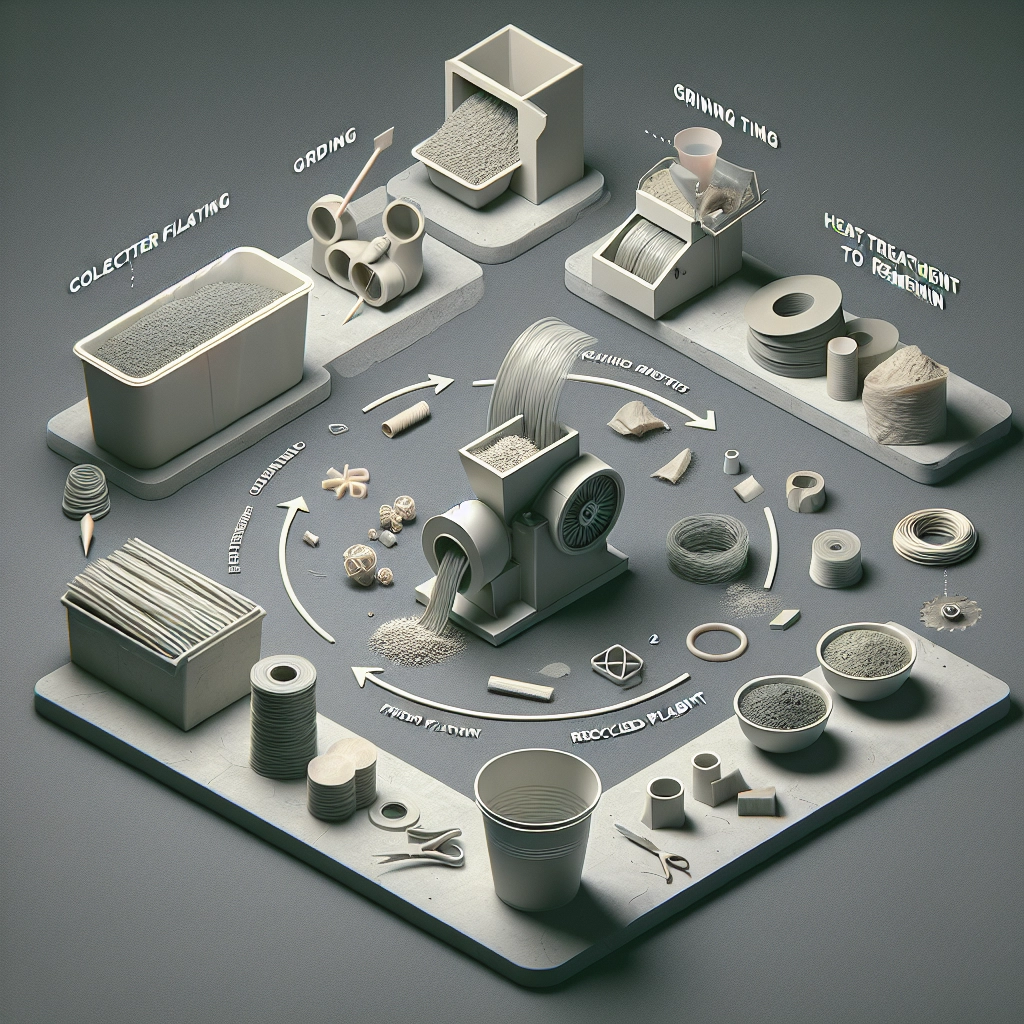Filament Recycling: What You Can Do with Leftover Material
If you’re anything like me, your 3D printer has become a dear friend in your creative endeavors. Whether you’re designing quirky gadgets, prototypes for a business idea, or educational tools, it’s incredible how a little filament can transform an idea into a tangible object. However, once the excitement fades, we often find ourselves left with leftover filament. So, what can we do with this unused material? Let’s dive into the world of filament recycling and explore how you can give that leftover filament a new lease on life.
Understanding Filament Waste
First things first, why does filament waste happen? There are several reasons: failed prints, miscalculations in filament usage, or perhaps you just tried out a new color that didn’t quite fit the vision. Whatever the reason, it’s essential to remember that this filament doesn’t have to head straight to the landfill. Many 3D printing enthusiasts are discovering creative ways to reuse, recycle, and repurpose this material.
Filament Recycling: A Sustainable Choice
Recycling filament is not only great for the planet but also an opportunity to spark your creativity. Companies and individuals are developing various ways to recycle used filament, turning it into new objects or even new filament. Here are a few options to explore:
1. Filament Re-extrusion Machines
There are machines specifically designed to recycle plastic waste by re-extruding it into usable filament. These devices can take your leftover filament scraps and grind them down, melt them, and then form them into new filament spools. While some of these machines can be pricey, they’re a worthwhile investment for creators who have ongoing filament waste. Brands like Filabot and ProtoCycler offer accessible solutions for home users, allowing you to turn your waste into usable material.
2. Filament Blending
If you have different types of filament—let’s say PLA mixed with some PETG scraps—you can blend them. By melting and combining them in a controlled way, you can create unique filament blends. Just remember that different materials have different melting points, so always be cautious! This can add an exciting twist to your projects, giving new character to your creations.
3. Creating New Projects
Utilize leftover filament creatively. Small bits can be used to add detailing to your existing prints, while larger scraps can become the base for new designs. You might create something as simple as a phone stand, or as complex as an intricate sculpture. Think outside the box: can those tiny filament remnants become bird feeders, keychains, or even components in larger builds?
4. Support Your Local Community
Consider donating leftover filament to schools, maker spaces, or community workshops. Many institutions welcome material donations for educational projects or art classes. Not only do you reduce waste, but you also empower other makers to experiment and create.
5. Upcycling Projects
Upcycling is a fantastic way to breathe new life into leftover filament. You can make items like custom jewelry, coasters, or decorative art. With a little creativity, the possibilities are endless. Are you handy with tools? You could even use that filament to repair items around the house. It can serve as a quick fix for broken parts, allowing you to reuse and repurpose instead of throwing things away.
6. 3D Print Recycling Programs
Some companies and organizations specialize in filament recycling through collection programs. Check if there are local initiatives or companies willing to take your leftover filament off your hands to recycle it properly. Programs like Filament for Good collect unused filament and repurpose it for community projects. This is a great way to declutter and do your part for sustainability!
7. Educate Yourself
Lastly, take the time to learn more about the materials you’re using. Different filaments have varying properties and behaviors when recycled. Understanding this can help you make more informed decisions about what to do with your scrap. Many online forums, blogs, and tutorials exist where passionate makers share their knowledge and experiences—so jump in and get inspired!
Embracing filament recycling doesn’t just reduce waste; it opens a world of creative opportunities. Whether you choose to reuse, repurpose, or pass along your excess materials, you contribute to a more sustainable fabrication ecosystem. The next time you encounter leftover filament, remember that your creativity doesn’t have to end there—there’s always a second chance waiting for that abandoned spool. Happy printing!

